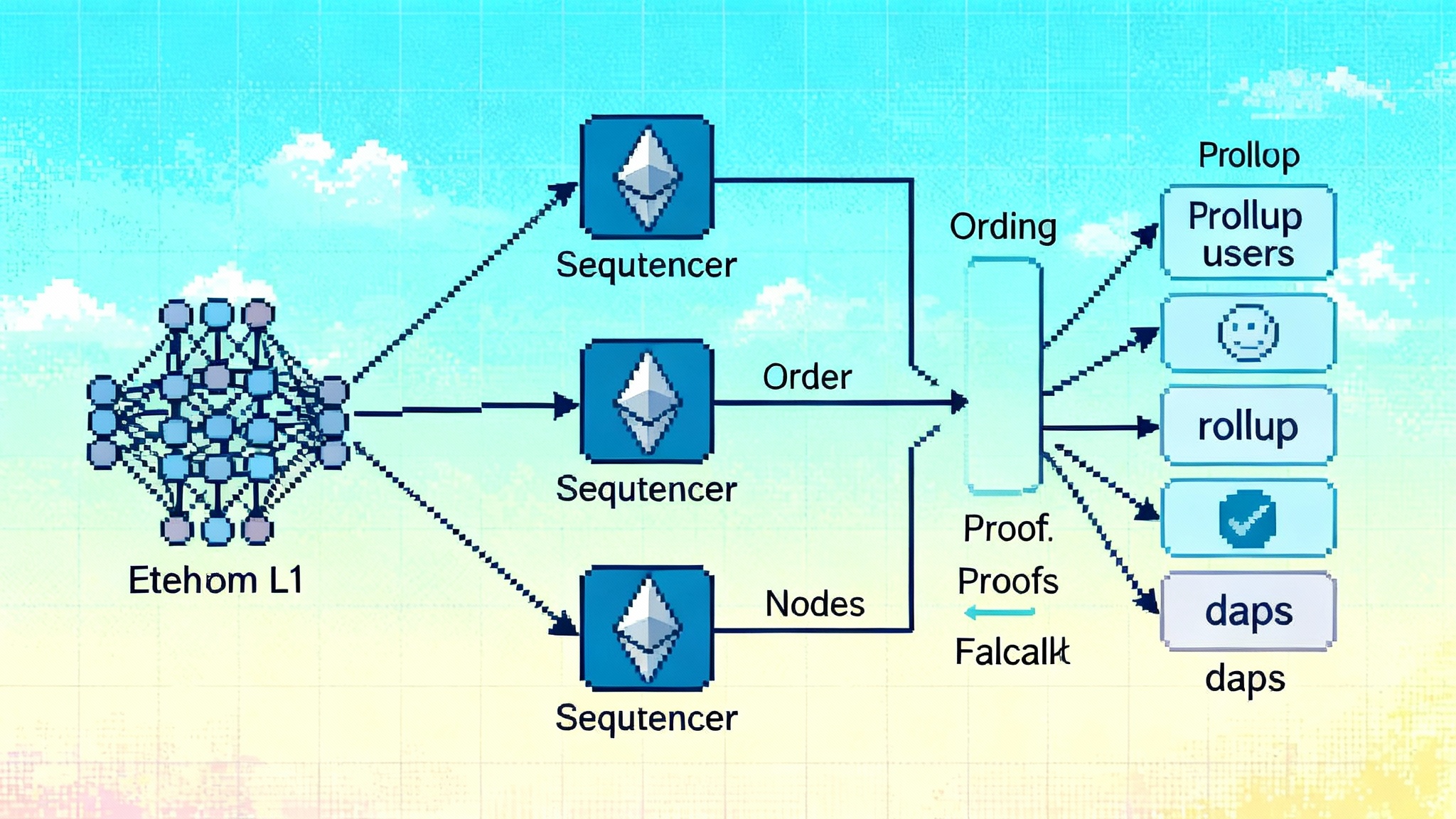Nasdaq’s plan to list tokenized stocks on its main market
Nasdaq has asked the SEC to let tokenized versions of listed stocks and ETPs trade on the same order book as their traditional shares. Here is the regulatory path, the market plumbing that must line up, and a builder playbook to ship in the next 12 months.

The news, in plain English
On September 8, 2025, Nasdaq filed a rule change with the SEC that would let tokenized versions of listed stocks and exchange traded products trade on the same order book as their traditional shares. The filing matters because it keeps tokenized instruments inside the national market system rather than creating a parallel market with separate liquidity, rules, and protections. You can read the SEC notice SR-NASDAQ-2025-072, which the Commission published on September 16, 2025, for public comment.
Here is the core idea. If a tokenized share carries the same material rights and privileges as the traditional share and shares the same CUSIP, Nasdaq will treat the two forms as interchangeable for trading. An order tagged for tokenized settlement can rest and execute against any other orders in the same symbol. Execution priority, market data, trade reporting, and error handling are unchanged. The only place tokenization shows up is after the trade, in how settlement happens.
How one order book can hold both worlds
Nasdaq’s proposal is conservative by design. It does not redefine what a security is. It defines a tokenized security as the same security that investors already know, recorded in a new format for post trade processing. On the order book this approach preserves:
- Fungibility. Tokenized and traditional shares of the same class and CUSIP are the same thing for trading.
- Price discovery. Quotes and trades from both forms contribute to the NBBO. There is no carve out or secondary tape.
- Surveillance and protections. Existing market surveillance and clearly erroneous trade rules continue to apply.
The exchange adds a new instruction at order entry that lets a participant express a preference for tokenized settlement. That instruction rides along with the order, but it does not create a separate book or priority. Post trade, that flag guides how the position is delivered.
The regulatory path from here
Nasdaq’s filing is a proposed rule change under Exchange Act Section 19(b)(1). The mechanics matter because they determine timing and certainty.
- Publication and comment. The SEC has already published the notice, which starts the comment clock. Comment letters will shape staff questions and any amendments.
- Initial decision window. Within 45 days of publication, the SEC can approve, disapprove, or extend. The Commission often extends once or twice to allow a fuller record. If the issues are complex, it can institute proceedings to decide, which adds additional time windows.
- No exemptions requested. The filing seeks to fit tokenized trading within existing national market system rules. That frames this as a market operations change, not as a new asset class seeking bespoke relief.
Expect at least one round of comments focused on investor protections, operational readiness, disclosure around rights in tokenized form, and the interaction with clearing and settlement infrastructure.
Market plumbing you should care about
Tokenized trading only works if post trade can mint, deliver, safe keep, and recall tokenized positions with the same reliability as book entry at DTC. Three pieces need to move together.
1) DTC token settlement
Nasdaq’s filing describes a model in which, after a trade, DTC moves a participant’s book entry position into a control account, mints a corresponding token, and delivers it to a DTC registered digital wallet. The Federal Register notice 2025-18305 states that DTC’s process may be available by the end of the third quarter of 2026, subject to regulatory approvals.
Important details to watch as DTC socializes its specs:
- Wallet model. Expect wallet addresses to be registered to DTC participants or their qualified sub custodians, not anonymous addresses.
- Minting and burning. Token supply should reconcile in real time to a DTC control account, with deterministic burn on reconversion to book entry.
- Messaging. Tokenized delivery will have to coexist with the ISO 20022 settlement message migration and T+1 timelines. Firms should plan for connectivity, validation, and exception handling in parallel.
2) Transfer agents and corporate actions
If a security can be held in token or book entry form, the issuer’s transfer agent must ensure the share register remains accurate, rights are identical, and entitlements flow correctly. Practical issues include:
- Vote and proxy distribution. Token holders must be included in record dates, quorum counts, and vote tabulation without friction.
- Dividend and distribution mechanics. Timely and accurate payment requires mapping wallet based holdings to payees, and it should support dividend reinvestment if offered.
- Corporate action events. Stock splits, mergers, and exchange offers need atomic updates to token balances, with clear reversal paths for broken events.
3) Custody and key management
Broker dealers and custodians will need digital asset controls that meet SEC, FINRA, and PCAOB scrutiny. Expect requirements around:
- Segregation. Clear segregation between firm, customer, and omnibus wallets, with reconciliations tied to DTC records.
- Keys and approvals. Multi party approval, recovery procedures, and SOC 2 audited controls.
- Insurance and loss events. Disclosures and coverage policies for private key compromise or protocol incidents.
What this unlocks for crypto and web3
Assuming the rule is approved and DTC’s process goes live on the proposed timeline, the industry gets something new. The same shares that inform the NBBO and settle through DTC could also settle as onchain tokens under the supervision of existing market infrastructure. That opens:
- Onchain collateral flows. Broker dealers and asset managers could move blue chip equity collateral onchain within known legal wrappers. That helps with intraday margin movement, cross venue netting, and rapid substitution of collateral.
- RWA liquidity bridging into DeFi. Permissioned pools could accept tokenized securities with onchain attestations of ownership and encumbrances. This creates new yield markets anchored in regulated RWAs rather than synthetic wrappers. Builders can stop inventing lookalike products and connect to real equity or ETP exposure instead. For context on how banks are testing token rails, see our take on HSBC tokenized deposits versus stablecoins.
- Better auditability. Onchain settlement provides a shared ledger of movements that can be reconciled against DTC’s control account, tightening operational risk.
- New product packaging. Issuers might offer investor choice at the point of distribution. The same ETF share could be delivered to a traditional brokerage account or to a qualified wallet. Secondary trading remains unified on Nasdaq’s book either way.
Wallet and KYC UX will make or break it
The crypto native experience starts at the wallet, but regulated securities add identity and suitability. Expect the first wave to look like this:
- Broker controlled or qualified custodian wallets bound to a legal entity. These will pass KYC and AML checks up front, then present a wallet address that is whitelisted at DTC.
- Consumer wallets with broker connect. Over time, brokers may let customers register a personal wallet that meets technical and compliance standards. Think of this as ACATS for wallet addresses, with the broker still responsible for tax reporting and disclosures. If you care about measurement and oversight, revisit our crypto reporting workflow for policy.
- Compliance bindings. Token transfers will be subject to rules around control positions, restricted shares, and good control locations. That likely means transfer checks at the wallet layer and the custodian layer.
In short, the UX needs to feel like brokerage with an extra destination choice, not like a DeFi protocol asking the average investor to self custody from day one.
A builder playbook for the next 6 to 12 months
You do not need to wait for the last mile of infrastructure to start shipping. Here is a realistic, sequenced plan.
- Map the data path
- Inventory the data and events you will consume and emit: order flags, execution reports, settlement instructions, token mint burns, reconciliations, and corporate actions.
- Align reference data so tokens and book entry positions map to the same CUSIP and tax lot identifiers.
- Build compliance into the wallet layer
- Implement wallet address vetting, sanctions screening, and customer segregation. Treat addresses like accounts with KYC attributes.
- Add policy engines that can enforce transfer restrictions by security, customer type, and jurisdiction. Design for audits.
- Prepare for DTC messages and testing
- Assign a team to track DTC’s token settlement interfaces and test plans. Build adapters that can switch between book entry and token delivery without breaking workflows.
- Create reconciliation jobs that compare onchain balances to DTC control account statements and your internal books.
- Start with an ETP pilot
- Coordinate with an issuer, transfer agent, and market maker to pilot a single ETP in tokenized form as soon as the exchange and DTC open their windows. ETPs simplify issuer level actions and investor communications.
- Design customer communications that explain what is changing and what is not. Emphasize that rights and protections are the same.
- Connect to permissioned DeFi
- Integrate with pools that accept qualified tokenized collateral. Use allowlists and oracle attestations that tie tokens to DTC registered wallets.
- Offer automated collateral moves between brokerage and onchain venues with pre approved guardrails.
- Harden operations
- Run incident response drills for lost keys, chain halts, and reconciliation breaks. Document roles, thresholds for freezes, and customer communications.
- Expand your SOC control set to include digital asset custodial processes. Brief your auditor early.
- Plan for scale
- Expect more frequent but smaller settlement movements as clients optimize collateral. Pre compute fees, gas cost management, and timing windows to avoid end of day congestion.
Key risks and how to mitigate them
- Liquidity fragmentation. If multiple chains or token formats appear, liquidity could split. Nasdaq’s same book approach helps at the trade layer, but settlement fragmentation still creates frictions. Mitigation: standardize on one DTC supported format at launch and add others only when there is a clear network effect.
- Rights mismatch. If any token instance strips or alters rights, it must trade as a distinct instrument. That hurts user experience and could confuse investors. Mitigation: issuers and transfer agents should publish definitive statements that rights are identical in token and book entry form, and exchanges should enforce that standard tightly.
- Compliance complexity. Wallet based transfers introduce new paths for mistakes around restricted securities, control positions, and reporting. Mitigation: deploy policy checks at address whitelist time and at transfer time, and ensure brokers remain the point of tax and regulatory reporting.
- Key management and operational risk. Private key compromise or poor segregation could create loss events. Mitigation: multi party controls, key rotation, and insurance. Keep the ability to freeze and reissue under transfer agent authority in defined scenarios.
- Interoperability with DeFi. Permissionless venues are unlikely to be supported at first, which limits utility. Mitigation: build for permissioned pools that can consume attestations and support recourse mechanisms while the risk model matures.
- Corporate actions and record dates. Timing mismatches between chain state and issuer records can cause entitlement errors. Mitigation: use snapshot procedures managed by the transfer agent, with cutoffs that align chain height to record date timestamps.
Why this looks different from past tokenization pushes
Several platforms tried to list token like instruments that resembled equities but did not carry full rights. That model struggled to attract serious liquidity and raised regulatory concerns. Nasdaq’s approach starts with actual listed securities and keeps them inside the existing trading, clearing, and disclosure regimes. The token is a settlement representation, not a new product trying to sit outside the rules.
What to watch next
- SEC comment file for SR-NASDAQ-2025-072. The themes in comment letters will signal where the Commission may seek changes.
- DTC interface details. Wallet registration, mint burn workflows, and reconciliation specs will dictate engineering schedules.
- Early issuer interest. Expect ETP sponsors to move first. If one marquee fund goes live, broker and custodian roadmaps will accelerate. For a policy adjacent angle, see our note on EU banks' euro stablecoin outlook.
- Broker communications. The first Equity Trader Alert that sets a go live date will mark the real start of the race.
The bottom line
Nasdaq’s filing is a pragmatic blueprint to let tokenized shares live where real liquidity already exists. If the SEC approves the rule and DTC lands its token settlement process on the stated timeline, the industry could be trading and settling the same securities in both book entry and token form before the end of 2026. For builders and institutions, the right move now is to treat tokenized settlement as an integration project that touches your market data, compliance, custody, and collateral rails. Do the unglamorous work, and you will be ready to turn on new products as soon as the lights go green.








